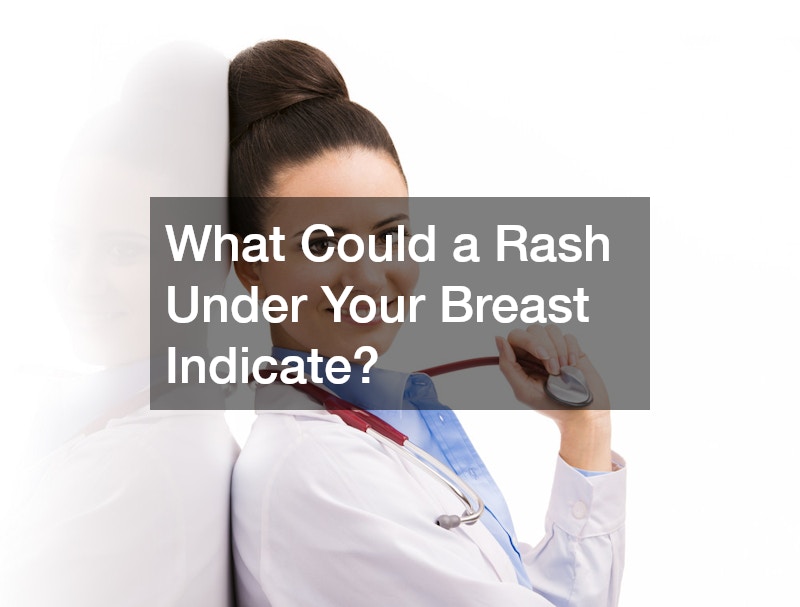A rash under the breast, often referred to as intertrigo, is a common condition that can cause discomfort and concern. While usually not serious, it’s essential to understand the potential causes and treatments to alleviate symptoms and prevent complications.
Common Causes of Rash Under Breast
- Intertrigo: Intertrigo is an inflammation of skin folds caused by friction, moisture, and heat. It often affects areas where skin rubs together, such as under the breasts. This condition can lead to redness, itching, and discomfort. Contributing factors include sweating, poor ventilation, and obesity.
- Fungal Infections: The warm, moist environment under the breasts is an ideal breeding ground for fungi. Yeast infections, particularly those caused by Candida, are common culprits. Symptoms include redness, itching, and sometimes a whitish discharge or a foul odor.
- Bacterial Infections: Bacterial infections, such as those caused by Staphylococcus or Streptococcus, can also result in a rash under breast. These infections might present as red, swollen areas with pus-filled blisters. Proper hygiene and sometimes antibiotics are necessary to treat these infections.
- Heat Rash: Heat rash, or prickly heat, occurs when sweat glands become blocked and sweat gets trapped under the skin. This can cause small, red bumps and a prickling sensation. It is more common in hot, humid weather and can be exacerbated by tight clothing.
- Allergic Reactions: Allergic reactions to soaps, lotions, or fabrics can lead to a rash under the breast. Contact dermatitis, a type of allergic reaction, causes red, itchy, and inflamed skin. Identifying and avoiding the allergen is crucial for treatment.
- Psoriasis: Psoriasis is a chronic autoimmune condition that can cause red, scaly patches on the skin, including under the breasts. This condition requires medical management with topical treatments or systemic medications.
Symptoms to Watch For
Rashes under the breast can vary in appearance and severity. Common symptoms include:
- Redness
- Itching
- Swelling
- Pain or discomfort
- Blisters or sores
- Foul odor
If you experience severe symptoms such as intense pain, significant swelling, or if the rash does not improve with over-the-counter treatments, seek medical advice.
When to See a Doctor
If the rash persists despite home treatment, spreads, or is accompanied by fever or severe pain, consult a healthcare professional. Persistent rashes may indicate an underlying condition that requires more specialized treatment.
Understanding the potential causes of a rash under breast can help you manage and treat it effectively, ensuring comfort and preventing complications. By maintaining good hygiene, wearing appropriate clothing, and seeking medical advice when necessary, you can keep your skin healthy and rash-free.


